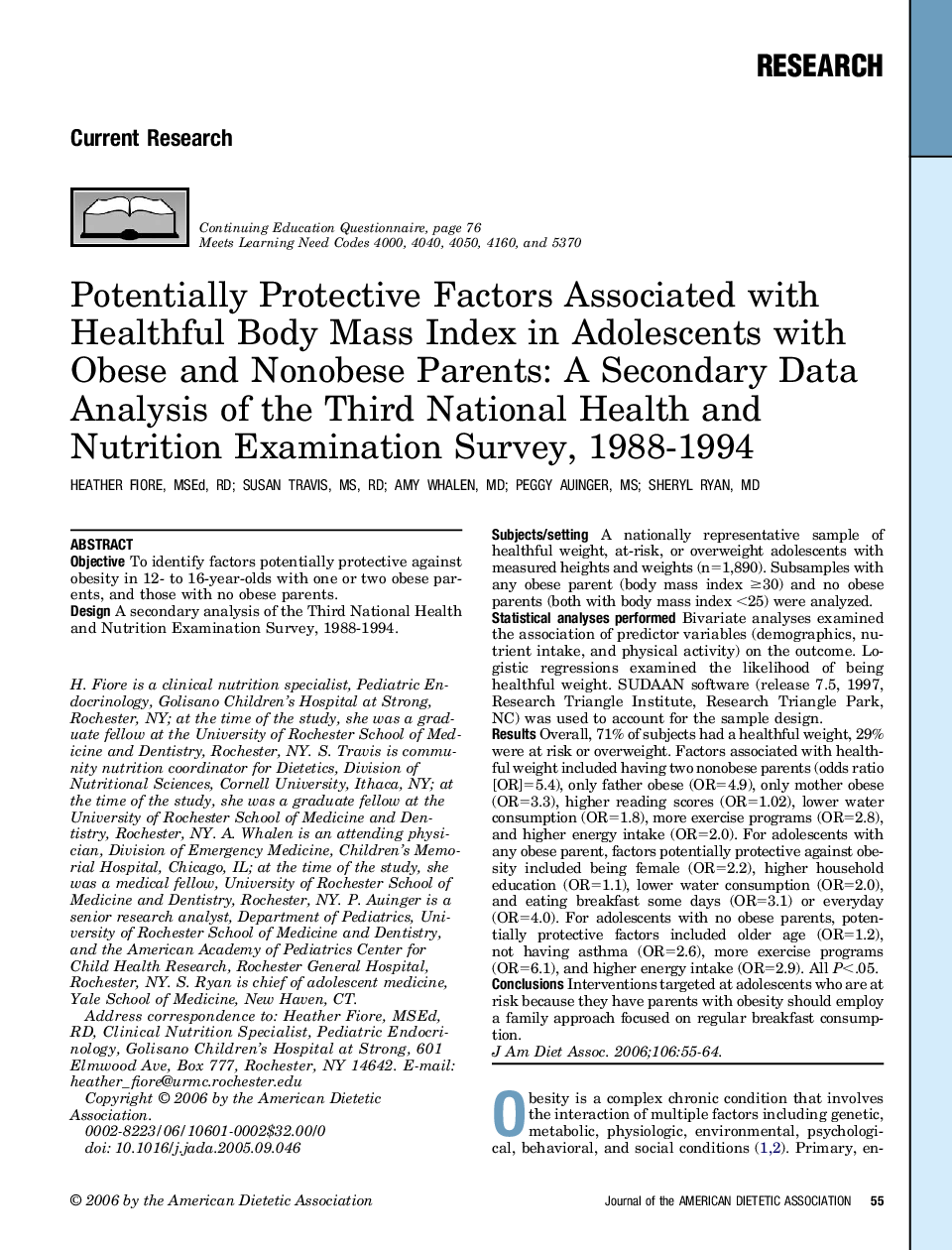| کد مقاله | کد نشریه | سال انتشار | مقاله انگلیسی | نسخه تمام متن |
|---|---|---|---|---|
| 2658394 | 1140078 | 2006 | 10 صفحه PDF | دانلود رایگان |

ObjectiveTo identify factors potentially protective against obesity in 12- to 16-year-olds with one or two obese parents, and those with no obese parents.DesignA secondary analysis of the Third National Health and Nutrition Examination Survey, 1988-1994.Subjects/settingA nationally representative sample of healthful weight, at-risk, or overweight adolescents with measured heights and weights (n=1,890). Subsamples with any obese parent (body mass index ≥30) and no obese parents (both with body mass index <25) were analyzed.Statistical Analyses PerformedBivariate analyses examined the association of predictor variables (demographics, nutrient intake, and physical activity) on the outcome. Logistic regressions examined the likelihood of being healthful weight. SUDAAN software (release 7.5, 1997, Research Triangle Institute, Research Triangle Park, NC) was used to account for the sample design.ResultsOverall, 71% of subjects had a healthful weight, 29% were at risk or overweight. Factors associated with healthful weight included having two nonobese parents (odds ratio [OR]=5.4), only father obese (OR=4.9), only mother obese (OR=3.3), higher reading scores (OR=1.02), lower water consumption (OR=1.8), more exercise programs (OR=2.8), and higher energy intake (OR=2.0). For adolescents with any obese parent, factors potentially protective against obesity included being female (OR=2.2), higher household education (OR=1.1), lower water consumption (OR=2.0), and eating breakfast some days (OR=3.1) or everyday (OR=4.0). For adolescents with no obese parents, potentially protective factors included older age (OR=1.2), not having asthma (OR=2.6), more exercise programs (OR=6.1), and higher energy intake (OR=2.9). All P<.05.ConclusionsInterventions targeted at adolescents who are at risk because they have parents with obesity should employ a family approach focused on regular breakfast consumption.
Journal: Journal of the American Dietetic Association - Volume 106, Issue 1, January 2006, Pages 55–64